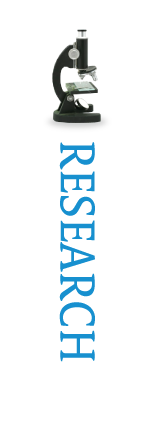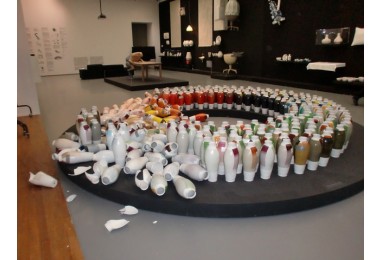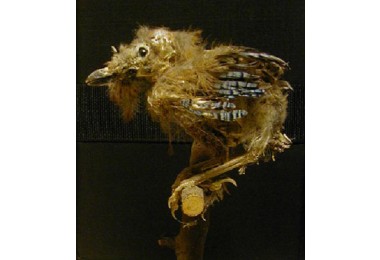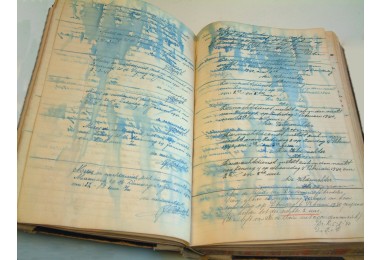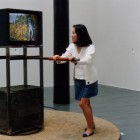-

The results of the Research Agenda 2008-2012 through a selection of expertises of the Cultural Heritage Agency of the Netherlands.
-
Expertise
 Reading modeshare
Reading modeshareWherever they may be, objects are constantly exposed to the environment acting on them. This can influence the deterioration of materials, which in turn can change the value of the object.

A so-called mockup (demo example) of the by vandalism damaged painting in 1992 Who's Afraid of Red, Yellow and Blue of Barnett Newman
The environment can also affect intangible aspects of an object. For example, consider perception (how the viewer experiences the artwork or object), readability and context, characteristics that also determine the valuation of an object.
Damage factors
All deterioration processes and changes in value are caused by one of the Ten Damage Factors:
- Mechanical action
- Water
- Fire
- Thieves & Vandals
- Vermin & Micro-organisms
- Pollution
- Light, UV and IR radiation
- Incorrect temperature
- Incorrect relative humidity
- DisintegrationMeasures
Under the motto of 'prevention is better than cure', the RCE strives to take protective measures in these ten areas. This is the field of Preventive Conservation, Security Provision and Facility Management. The influence of one or more damage factors on different materials is being studied in various projects. That makes it possible to achieve a better understanding of deterioration processes and value change, to be able to explain damage, to take measures to prevent recurrence and to make prognoses to prevent future damage.
Collection-risk
Under the Collection Risk Management program, a methodology has been developed to set priorities for measures to be taken so that institutions can have customized solutions for their own situation.
Knowledge in practice
Thinking in terms of risk management has led to a change in advice on storage and display conditions. No longer do we refer to numeric standards for preventive conservation. We now offer guidelines that enable the user to find affordable and tailor-made solutions for their own situation. This is due, on the one hand, thanks to the development of the collection care professionals and their ability to apply knowledge in decision making. And on the other hand because research has enabled us to make better prognoses of degradation of objects and materials in time. The revised guidelines for museum lighting (2008) and indoor climate (2009), that were designed on the foundations of risk management, allow for more flexibility and wider ranges in realizing optimum accessibility with minimum risk.


